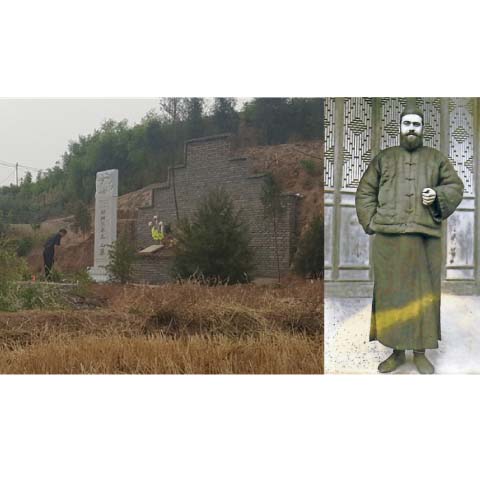A Dutchman’s sacrifice has earned him the community’s lasting gratitude.
Franciscan priest Aemilianus van Heel died trying to protect his flock from the Japanese army in 1938. His effort earned him a violent death from two shots in the chest and slashed wrists.
The villagers buried their protector in the church yard then fled.
Today, his tomb is on top of a small hill in Shitou Geda village, Yuanqu, North China’s Shanxi province. It overlooks a wheat field he reclaimed from the wild in the 1930s.
Local residents regard him as a family member who is still alive, residing on the hill, and a patron saint, reports China Daily.
A new white-marble tombstone, which stands out against the Loess Plateau, now marks his final resting place. It is 310 centimeters tall, representing the 31 years of the missionary’s life. He was known as Father Hu Yongsheng among locals.
This year marks van Heel’s 110th birthday.
When the Imperial Japanese Army invaded the Yuanqu county on Sept. 13, 1938, more than 2,000 refugees hid in Shitou Geda’s Catholic church. Van Heel sat at a table in front of the church to prevent Japanese troops from harassing those inside.
On Oct. 8, the Japanese army broke into the church hunting for women. But he threw a Japanese soldier out of the church, just like an “eagle catching a little chicken,” many senior villagers say.
The furious Japanese soldiers sent him an ultimatum demanding he hand over 20 young women and 10 cattle to them.
Van Heel is believed to have replied: “You can take my mule. There are no cattle in the church. As long as I am here, you will not get a single woman from the church.”
The villagers found him lying in a pool of blood in his bedroom the next morning with fatal wounds. For its part, the Japanese army claimed he committed suicide.
After burying him, the villagers fled. His assistants stayed behind. Two years later, they hid a fleeing Kuomintang general Gao Guizi after his defeat by the Japanese army.
Gao Shijie, the daughter of Gao Guizi, funded the tomb’s renovation and the new tombstone to remember Van Heel’s sacrifice and the help her father received from the church.
Van Heel’s sacrifice was unknown outside the community until 1990, when villager Song Minhui wrote to the Dutch embassy in Beijing.
Then Dutch ambassador Roland van den Berg wrote back expressing appreciation, and had Song’s letter translated into English.
Research commissioned by the Dutch foreign ministry found no relatives alive.
Van Heel was born in 1907 in Leiden, and went to China in 1933. He learned Chinese in Luzhou, Shanxi, then joined the Shitou Geda Catholic church in 1936. He was the third priest to be posted there.
Categories
Villagers build tomb to honor Dutch priest
